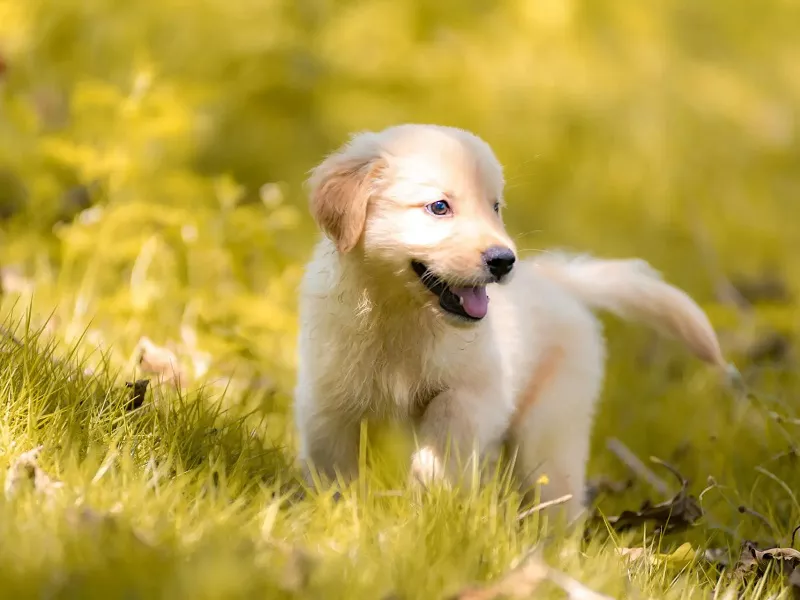A dog cage is a good tool for training dogs to defecate and when they are alone at home. Although it is a bit cruel to keep dogs in it, there is no doubt that the effect is still obvious. As long as the kennel is well trained, the dog will actually be happy to have a special place to sleep. Moreover, in the future, the dog cage will mean a warm home for it, and it will be more convenient for the owner to bring the dog with him when he goes out. Therefore, dog cages should be a good place for dogs. Do not use dog cages as a place to confine and punish dogs. So, how to crate train a dog?
Choose a suitable dog cage
1.The size of the cage is appropriate. The cage should have enough space for the dog to stand, sit, and stretch its limbs, but don’t buy a cage that is too large, because the dog may divide the large space into two parts, the excretion area and the sleeping area.
- You can purchase two cages of different sizes at one time. Small cages are used when the dog is young, and larger ones are used when the dog grows up.
- You can also buy only one large cage, divide the area suitable for it according to the size of the puppy, and remove the divider when the puppy grows up.
2.Choose the cage you like. The price is different, the variety is wide, and the selection of dog cages is relatively large. Some dog cages look like furniture and can be used as side tables or kennels. Think about what type of cage is right for your dog before buying.
- The cage made of hard plastic material has sparse ventilation openings on the other sides except for the front door, which is relatively strong and suitable for traveling with dogs.
- The metal mesh cage can not be bitten by dogs and has a wide field of vision. However, for most dogs, metal mesh cages do not make the dog feel “in the house”, so even though metal mesh cages are the cheapest, this type of cage is not the best choice.
- A puppy fence without a bottom or cover is a good choice for very small dogs, but larger dogs may burrow out from the bottom or climb out from the top, so it is best to have someone supervised at home use this cage.
- It will be more comfortable to put a washable cloth pad at the bottom of the cage.
3. Put the dog cage in the ideal position. The dog cage should be placed in a place where there is a lot of traffic, and it should be placed in this position often during the day, so that the family or yourself will spend a lot of time walking around in front of the dog, and the dog will not feel lonely. , especially at night.
4. Create an entertainment environment for dogs in the cage. If your dog likes toys or pacifiers, etc., put these in the crate and let the dog think it’s a fun place. Pay attention to what you put in must be chewy and not easy to suffocate the dog. You don’t want your dog to chew a piece and swallow it, causing an intestinal blockage.
5. If it is a metal mesh cage, it should be covered with cloth. To make the dog more comfortable, cover the top or perimeter of the dog cage with fabric. This additional cover will help the dog feel safe. Be aware, however, that any coverings like blankets or towels can easily be pulled in and chewed by a bored or anxious dog. The solution is to put a wooden board with a larger area than the top of the cage at the top of the cage, and then cover it with cloth. The wooden board can spread the cloth and keep it a certain distance from the four walls of the cage, so that the dog can’t reach it.
6. Put some delicious food in the cage. Putting in tasty treats as part of crate training helps dogs associate the crate as a place to find good things. Healthy food and plenty of water are indispensable, especially if the dog stays in the cage for more than two hours, and it is necessary to provide enough water and food. You can buy a drinking fountain for hamsters and fill it with water.
7. The bottom of the cage should be comfortable. Fold old sheets or towels and place them at the bottom of the cage. If your dog already has a familiar mattress, you can also put it in the crate. Sheets or mattresses are not just a place for dogs to lie comfortably in their cages, but also to remind them that the cage is a comfortable place to sleep, not a place to excrete. If your dog poops on the mat, remove the mat as soon as possible to avoid the same thing happening again. A urine-filled towel not only makes your home and surroundings dirty, it also encourages your dog to use the area as a toilet all the time.
How to crate train a puppy at night
1. Make sure that the puppy is comfortable and quiet at night (as should adult dogs). Even if the dog cage is placed in a place with high traffic during the day, the dog should be placed in a safe and quiet place at night. Put the crate in an easy-to-clean area in case your dog poops and clean up, preferably on a tile floor rather than carpet.
2. Put the dog in the cage at night. If your dog hasn’t been fully cage-trained, take care to keep him safe in the cage at night. You want to play with the dog until he gets tired, then put him in the cage, give him something to eat to attract him, and close the cage door. Then leave the room where the dog is staying, enter the room when the dog is barking, but let them out when they don’t bark, or stand beside the cage and watch and don’t open the cage door.
Of course, you can also prepare a cardboard box to put the dog in, especially puppies are more suitable for cardboard boxes. During the first few days of bringing your dog home, train him in and out of the crate during the day, put him in a larger cardboard crate at night, and then move the crate to your bed. The disadvantage is that when it is used to being in front of your bed, it is a bit difficult to move it out.
3. Take care of the dog’s excretion at night. The maximum time between poops is 4 hours, so you can set an alarm and take it to the bathroom every 2-3 hours. Adult dogs will hold it longer, but if you are feeding an adult dog that is not trained, you should also take them to the bathroom at these intervals. Be careful not to talk to the dog when you take the dog to the bathroom at night, otherwise they will think you want to play with it, and its energy may come.
Guide the dog into the cage
1. Do not force the dog into the cage. Never force a dog into a crate and close the door. Likewise, never use a cage to punish a dog. Remember, a dog cage is not a prison, it’s not a place to go in when mistakes are made, a cage is a place where good things happen, a place to feel safe.
2. Put the dog in a room with a cage first. In this way, the dog will be willing to find its own territory, and it is possible to enter the cage.
3. The door of the cage should be opened. When guiding the dog into the crate, place the dog crate in a suitable position and keep the cage door open. Preferably, put a blanket in the cage that smells like a mother or a sibling, so he’ll be more willing to come in and find out. At this stage, the cage door should remain open so that the dog can enter and exit freely. When the dog uses the cage as its den, slowly train to close the cage door.
4. Give your dog lots of praise. When the dog enters the cage, praise the dog with great enthusiasm. Giving him more care and encouragement every time he enters the cage will help him see the cage as a place to be positive.
5. Put some delicious food in the cage. You can occasionally put special rewards such as cheese, chicken nuggets, beef, sheep and pig bones into the cage. The dog will think that this exciting place is worth exploring, because the results of the exploration will be rewarded.
6. Feed the dog in the cage. Make sure the cage door is open when feeding the dog. The place to eat will be easier for the dog to remember. If your dog is only a little bit into the cage, you can slowly move the food tray to the cage. Once the dog is in the cage, you can remove the dog tray Move deeper into the cage and let the dog eat before coming out.
7. Once the dog is happy eating in the cage, you can close the cage door. When the dog is used to eating in the cage and is happy, consider closing the cage door when it eats. When it’s done eating, just open the door. In this way, the dog will gradually get used to the feeling of being locked up.
8. Increase the time for closing the cage door. When the dog is used to eating in the cage, the closing time can be gradually increased, and the ultimate goal is to allow the dog to accept the 10-minute closing time when eating.
- This process should be done slowly, gradually increase the closing time, and give it enough time to adapt. For example, turn it off for 2 minutes when it is eating, increase it to 5 minutes after two days, and increase it to 7 minutes after two days.
- If the dog whines, it means that you increase the closing time too fast, and the time should be shortened next time.
- always remember, only when a dog is not barking in the cage (when barking stops), then let it out, otherwise, it will whine when it wants to go out.
9. Train the “cage” command. While the dog is getting used to entering the cage, it is easier to give a command related to entering the pet‘s cage, and once the dog accepts the command, you can use the command to get the dog into the cage.
- Select a command, such as “enter the cage” or “enter the nest”, and point to the cage with your finger while saying the command.
- Say the command while eating, and then put the food into the cage.
- During normal practice, when you say the command, if the dog enters the cage, throw some food to reward it.
Above is how to crate train your dog,For more knowledge about dog feeding, dog training, dog grooming, dog breeding, please pay attention to: mtedr.com, providing you with different kinds of dogs.


























